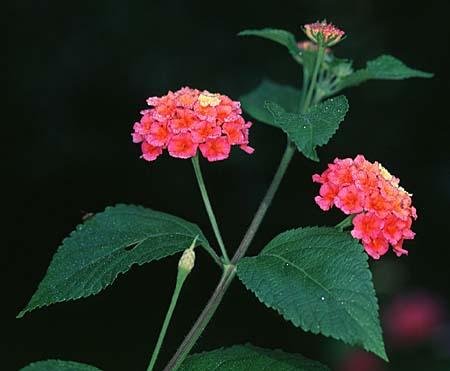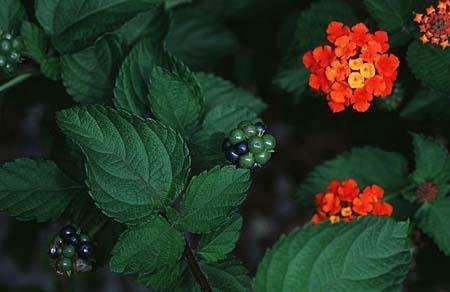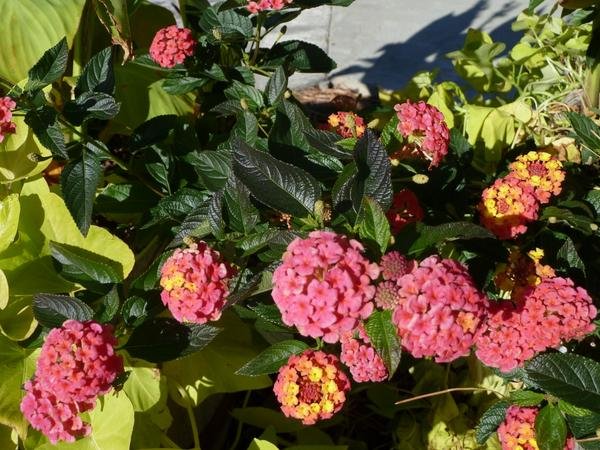Growing lantana in the garden is a great way to add color and interest. Simply choose a sunny location and plant them in well-draining soil. Although these plants are tolerant of many soil conditions, lantana flowers prefer slightly acidic soil. Mulching with pine needles is an easy way to raise pH levels in areas with low acid. Lantanas are planted in spring once the threat of cold weather and frost have ceased. Keep in mind, however, that they prefer warm temperatures so new growth may be slow to appear. Once the temperatures warm up though, they will grow abundantly.
Read more at Gardening Know How: How To Grow Lantana – Information On Growing Lantana
Common Name(s):
Common lantana, Lantana, Red sage, Yellow sage, shrub verbena
Cultivar(s):
Alba, Dallas Red, Miss Huff, New Gold

Description:
Small, perennial shrub with spiny, square stems; leaves simple, opposite or whorled, toothed, fragrant when crushed; flowers in flat-topped clusters on a long stalk, each flower small, tubular, 4-parted, white, pink, or yellow, changing to orange or red; fruit fleshy, green becoming bluish black. Lantana will perennialize in the warm coastal areas of N.C. The cultivar 'Miss Huff' will survive the winter in the Piedmont. Lantana is very attractive to butterflies and flowers from summer until frost.

Season:
Summer
Light:
Sun
Color:
White or Yellow turning orange, red or pink
Height:
1-5 ft.
Flower:
1 to 2 in. orange, yellow, or red and yellow flowers; fragrant; 0.3 in. berry-like drupe turns metallic blue or purple-black
